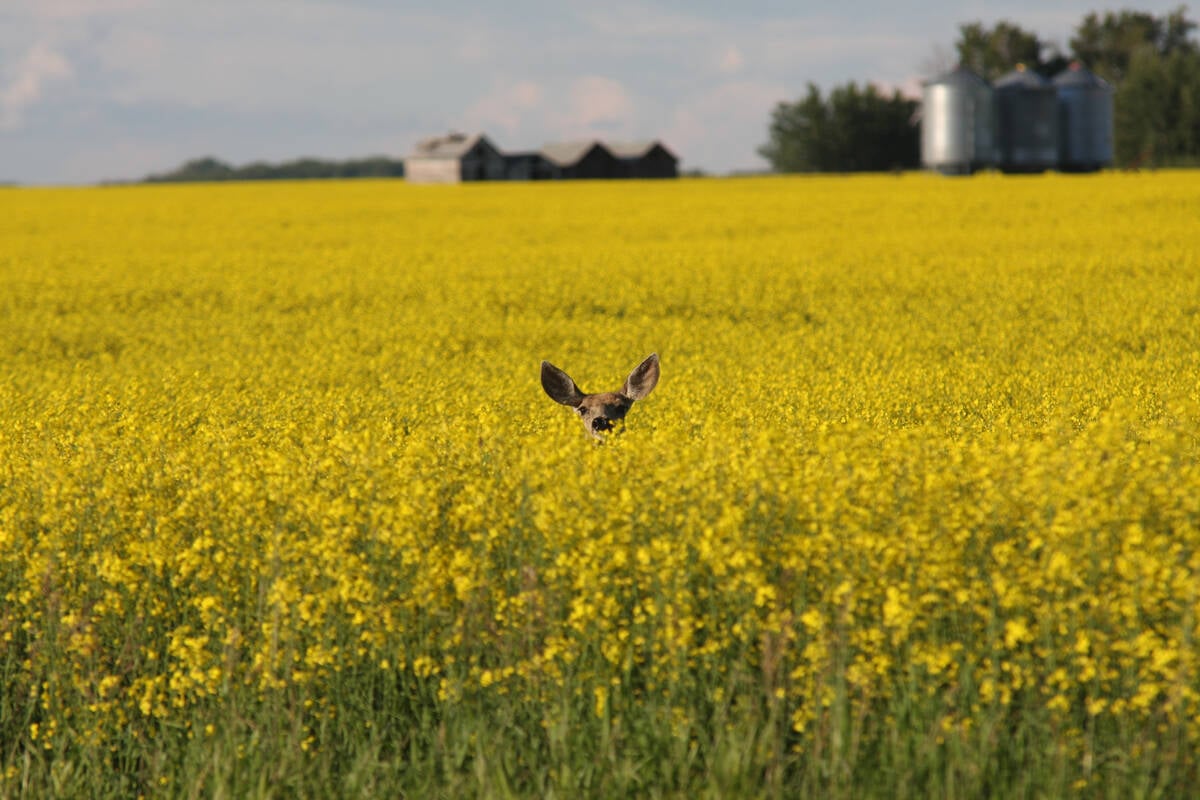Devastating losses drove hundreds of Canadian hog producers out of business between 2007 and 2010.
Many of those who survived are financially crippled and traumatized by the experience.
So it may come as a surprise that leading hog industry economists think Western Canada remains the world’s best place to produce pigs.
That means a few years from now, new hog barn construction might once more become a common sight on the Prairies.
“The opportunity is definitely there for growth and expansion,” said economist Dermot Hayes of Iowa State University, who has analyzed comparative costs of production for hog production in the U.S. Midwest, Western Canada, Brazil, Asia and Europe.
Read Also

Drones now used to assess wildlife crop damage in Saskatchewan
Wildlife damage in Saskatchewan crops is now assessed by drones and artificial intelligence.
Hayes’ analysis, including trips to pig producing regions of Europe, Brazil and China, has led him to conclude that the U.S. Midwest and Western Canada remain the lowest cost, disease-free production zones in the world.
Brazil, which has roughly equal production costs to Canada and the U.S., has almost insurmountable problems with foot-and-mouth disease.
Danish producers are being squeezed by lack of land and onerous regulatory restrictions. China, the world’s biggest pig producer and pork consumer, has myriad problems.
“Asia is right out the window,” said Hayes about overall production costs.
“Europe could probably hold its own because of the quality of their hog producers, but they have social constraints on how big a farm can be … and Europe’s just gotten left in the dust (by Canadian and U.S. large-scale barn development).”
Economist Al Mussell of the George Morris Centre at the University of Guelph in Ontario shares Hayes’ views about the Prairies’ competitive advantage in hog production.
“I remain pretty optimistic,” said Mussell. “In fact, I get more optimistic every day.”
He agrees with Hayes’ analysis of comparative costs of production and cites other advantages for Canadian producers as well.
“It’s the less tangible stuff that’s really coming to matter,” said Mussell, noting that animal traceability and detailed information about nutrition, health and disease are becoming critically important elements demanded by retailers and consumers. Only advanced countries like Canada and the U.S. are likely to be able to supply them accurately.
“I think that ability to manage information over time is going to become huge,” said Mussell.
But Mussell and Hayes see Achilles’ heels that could kill North America’s hope.
“One single animal disease can shut the thing down,” said Hayes.
He said domestic consumption must be able to absorb surplus product if a disease breaks out and the world’s borders close, as they did with H1N1.
For Canada, with much of its pork exported, that is an almost impossible thing to achieve.
Other challenges include finding a cost-effective means of more strict animal handling, water use and manure management.















